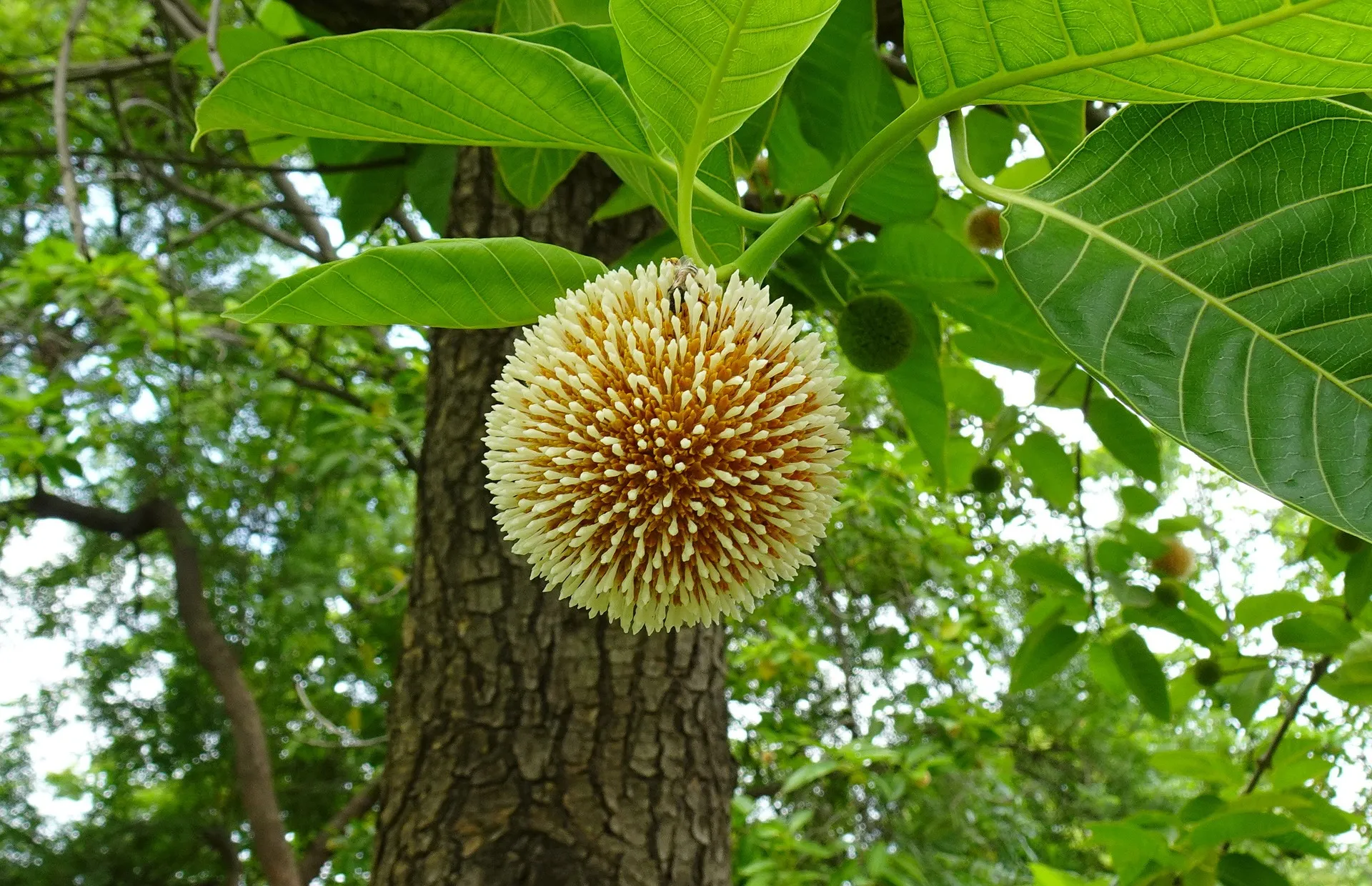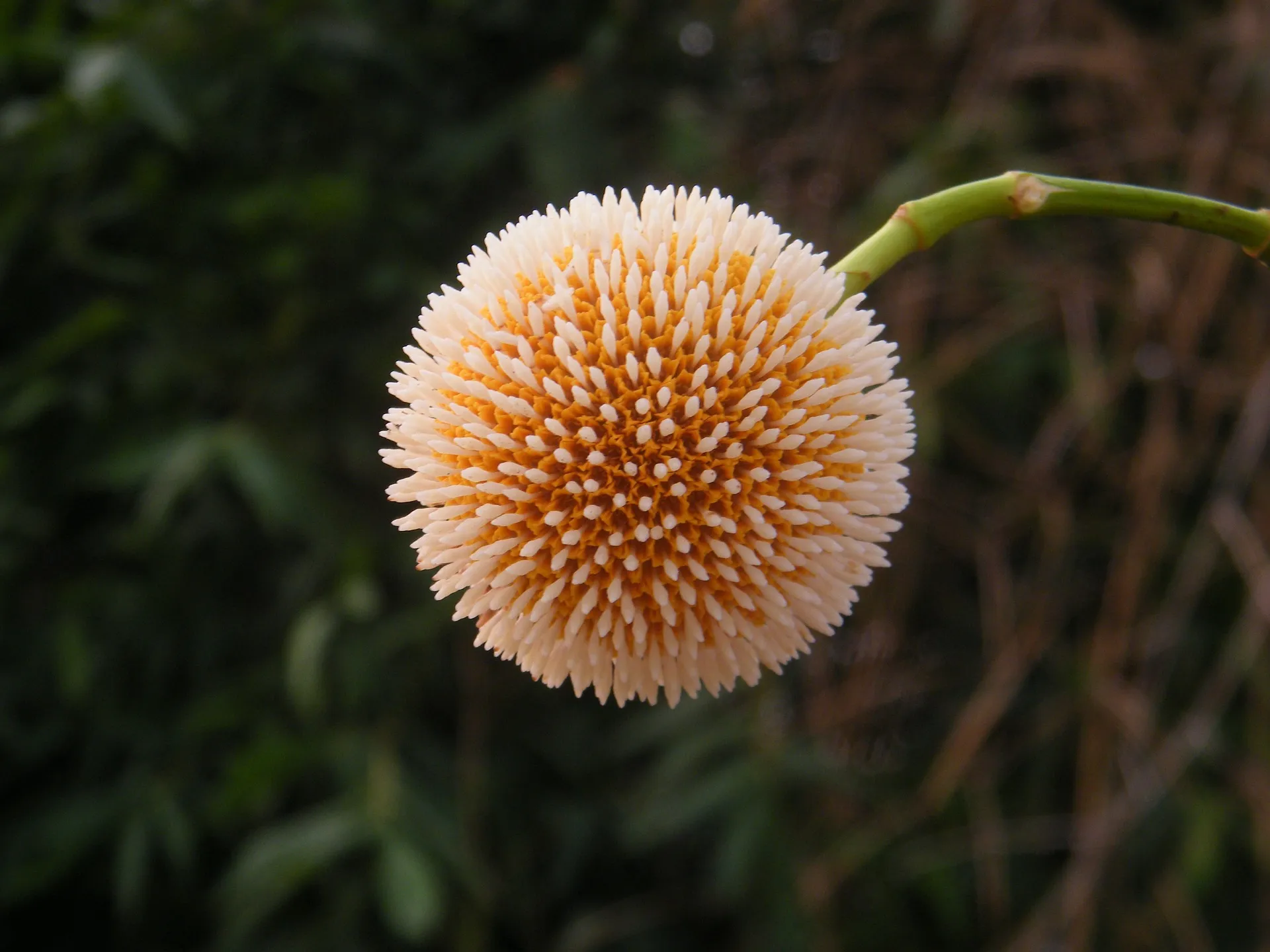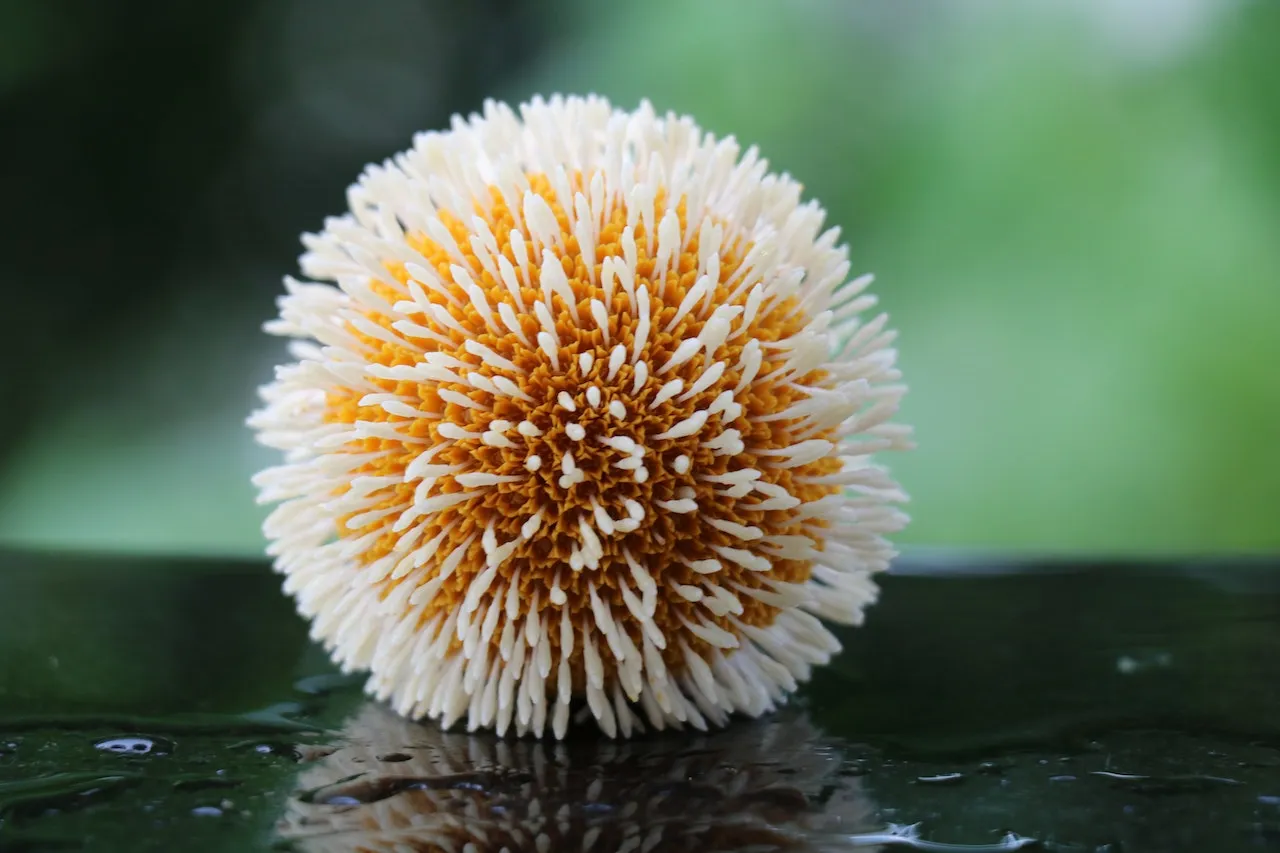The Kadamba tree, also known as Neolamarckia cadamba or Burflower tree, is a tropical deciduous tree native to Southeast Asia and South Asia. This tree is widely appreciated for its stunning yellow flowers, glossy leaves, and cultural significance in Hinduism. Not only known for its beauty as an ornamental plant, the Kadamba tree also holds numerous valuable bioactive compounds that are used medicinally.
Aside from being an aesthetically appealing ornamental plant,the kadamba tree boasts a plethora bioactive components present all throughout such as leafs..flower..bark which are utulized in ancient ayuverdic medicine to heal several conditions. The tree’s leaves, flowers, and bark contain many bioactive compounds that have been used in traditional Ayurvedic medicine to treat various ailments. In this blog, we will explore the beauty and cultural significance of the Kadamba tree, as well as its many traditional medicinal uses and health benefits.
Introduction to Kadamba Flower, Tree, and Leaf
The breathtakingly beautiful Kadamba(Neolamarckia cadamba) belongs to the Rubiaceae family and grows up to 45 meters tall The tree’s origin trace back to Southeastern part of Asia specifically countries belonging to the Southern area like India and other territories near. Reaching heights that exceed more than 40 meters, Kadamba trees stand pretty tall. Clusters of small, scented and yellow flowers make the Kadamba tree recognizable.
The Kadamba’s pretty blossoms flower in bunches from June through September when it is Monsoon season Smooth and grey bark, and large glossy leaves are some of the features of the Kadamba tree.
Geographical Location of Kadamba Trees
The distribution of Kadamba Trees covers diverse ecosystems which comprise tropical & subtropical forests coupled with the lowlands beside rivers While being prevalent around a variety of different habitat types – from Tropical/Subtropical forests to River banks- it’s notable that Kadam Yrees boast much greater prevalence within specific Indian regions: including both Eastern HImalayas as well Weastern ghasts.
It is worth noting that unlike its presence solely restricted to tropical wetland zones like Western Ghats and Eastern Himalayas within India; Kadamba trees also reflect different habitat preferences with growth spanning across countries such as lush forests Southeast Asian regions.

Manure
Kadamba trees require fertile soil that is also properly drained. The best possible environment for Kadamba trees’ development includes loam-rich and nutrient-dense soil. The ideal condition for the soil to nurture Kadamba trees would be keeping it slightly wet, and avoid making it too saturated with water. Organic matter can help enhance both the texture and fertility of soil that’s too sandy or clayey.
In order to achieve optimal growth for your Kadamba trees it would help if you used organic manure specifically cow dung or compost. Fertilizing is another approach one can take towards bettering the growth and blooms of Kadamba trees.
Maintenance of Kadamba Trees
The care and consideration required for growing kadamba trees are minimal though essential nonetheless. Make sure to water your tree consistently for its wellbeing – this becomes even more important during seasons of low rainfall. By shaping the trees with controlled trimming and removing infected parts, you can keep your Kadamba tree healthy for years to come.
Pesticides as well as fungicides should be used to protect the Kadamba trees from potential infections caused by pests or harmful microorganisms. In addition, to retaining moisture, mulching can also help to regulate soil temperature.
Benefits of Kadamba Trees
Traditional Ayurvedic medicine has employed the Kadamba tree to cure a number of illnesses, such as fever, coughing, and skin infections. The following are a few advantages of kadamba trees:
- The tree’s blossoms, leaves, and bark all have significant analgesic and anti-inflammatory effects that can help relieve pain and inflammation in the body.
- The Kadamba tree is effective in the treatment of skin infections, cuts, and wounds because it has antibacterial and antifungal qualities.
- Products from the kadamba tree are thought to calm and relax the mind and can be used to lessen tension, anxiety, and sadness.
- Antioxidant qualities are also known to exist in the tree’s leaves and blooms, which can aid in defending the body against harm caused by dangerous free radicals.
- Products from the kadamba tree have been proven to be successful in treating respiratory conditions like asthma, bronchitis, and coughs.
- Overall, the Kadamba tree is a wonderful and adaptable plant that adds a lot to any garden or landscape and has a lot of health advantages.
Traditional Uses of Kadamba Leaves
Within Ayurvedic traditions as well as within India more broadly, kadamba leaves serve numerous traditional functions. Kadamba leaf has enormous potentialities because it contains numerous medicinal values including the benefits against diseases like symptoms associated with high temperatures (fever), microbes-originated respiratory troubles (cough), stomach-related unhappiness that induces frequent bowl discharge (diarrhea).
Apart from their ritualistic importance, the usage of Kadamba leaves extend beyond that into providing remedy against several ailments. Furthermore, Hindus believe that using Kadamba leaves during worship brings good fortune and blessings. In Hinduism, among its many purposes and significances, kadamba also gets utilized for making garlands usually presented at every ceremony or ritual involving praying.
Medicinal Properties of Kadamba Leaves
The existence of multiple bioactive components including cadambine makes Kadamba leaves highly valuable in terms of their medicinal value. These cadamba tree leave contain various biologically active extracts that consists of phytonutrients like alklaolids flaanoliuds , tanines etc. Not only do Kadamba leaves contain alkaloids, flavonoids, tannins but they also have phenolic compounds. Furthermore, Cadambine is present within these plants providing supplementary beneficial health elements.
Usage of Kadamba Flower
Fever or headaches? Look no further than the trusted kadamba flower – widely known within traditional indian medicinal treatments. Furthermore, they possess properties that aid in digestion promotion and reduction of inflammation symptoms. The therapeutic properties of kadamba flower is applied by Ayuverdic practitioners for treating skin disorders including eczema and psoriasis.
Kadamba flowers serve ornamental purposes besides being known for their medical benefits. While known primarily for their healing attributes, Kasumba blooms are also prized as decorations; possessing both sweetness of fragrance as well as versatility in creating arrastement at festivals and ceremonies.

Seasonal Effect on Kadamba Trees
The seasonal fluctuations in the areas where kadamba trees are native have a significant impact on them. The tree blooms with clusters of tiny, yellow flowers during the monsoon season. Little fruits that are green while immature and turn yellow when fully ripe follow the flowers. The tree loses its leaves during the dry season, and the bark becomes light grey.
How Kadamba tree increase your garden’s beauty?
The Kadamba tree is a wonderful work of art in nature that can subtly improve your garden’s attractiveness. Its magnificent blossoms, distinctive silhouette, and thick, lovely foliage can all contribute to a tranquil and alluring environment in your outdoor space. The Kadamba tree is certain to enhance the aesthetic appeal of any garden and turn it into an awe-inspiringly gorgeous environment with its towering presence and lively energy.
Conclusion
Henceforth, one can conclude that apart from being beautiful plants, Kadamba trees play a vital role in both ecology preservation and tradition. In order to keep them healthy, they need consistent maintenance such as regular watering and pest management measures. With numerous traditional medicinal applications attributed to it, the Kadamba tree’s leaves and flowers harbor several therapeutic molecules in them.
In addition to being ecologically vital, it is worth noting that these plants possess notable cultural values hence culturally significant for Hindus who associate them with traditional rituals centering around Gods like Krishna Protecting the Kadamba tree will contribute greatly towards preserving our natural heritage.
FAQs
What exactly are Kadamba trees?
A: The Kadamba tree (Neolamarckia cadamba) is a blooming tree indigenous to India and Southeast Asia. It is well-known for its brilliant, fragrant blossoms and has been utilized in traditional Ayurvedic treatment for generations.
What health benefits does the Kadamba tree offer?
A: The Kadamba tree has a number of therapeutic benefits, such as anti-inflammatory, analgesic, and anti-anxiety actions. Infections of the respiratory system, digestive problems, and skin conditions are also treated with it.
How can you recognize a Kadamba tree?
A: The bright yellow-orange flowers that bloom in bunches and the big, broad leaves that define the Kadamba tree. The tree has a broad, grey-brown trunk and can reach a height of 45 meters.
Can you explain how exactly does Massage therapy with Kadamba oil relieve muscle tension and promote relaxation?
A: The creation of a wide range of remedies like herbal teas, powders and oils utilizes the Kadamba tree in Ayurvedic medicine. In addition, it is not uncommon to find the Kadamba tree used in massages aimed at relaxing people or reducing chronicle muscular pain.
Considered sacred within Hindu tradition, especially associated with Lord Krishna; across different ancient manuscripts mention about kadamb trees healing property. Hindus revere and relate to symbolism of godly presence attributed to Lord Krishna through the sacred Kadamba Tree. Attributed with divine powers, many holy hindu texts speaks volumes about how presence of kadamba tress can heal any diseases.
Growing the Kadamba tree in a home garden is feasible, right?
A: It’s possible for homeowners to successfully cultivate their own Kadamba trees by giving them enough sun exposure and ensuring the soil drains properly. Adequate maintenance of its form and structure requires that you prune your Kadamba Tree regularly.
When does Kadamba tree usually bloom?
A: From time to time between May and June, one may find bunches of pleasantly smelling bright-colored flowers originating from The kadamba trees.
What are The Kadamba tree has environmental advantages?
A: The Kadamba tree’s capacity for rapid growth and its capacity to offer shade to other plants make it an important species in regeneration efforts. Moreover, it helps to enhance air quality and stop soil erosion.
Do Kadamba tree products have any adverse effects?
A: The Kadamba tree is typically safe to utilize, although its sap or pollen may cause allergic responses in certain people. Before utilizing any novel herbal therapies, it is always recommended to seek advice from a healthcare provider.
What other types of trees are comparable to the Kadamba tree?
A: The Indian Cork Tree (Millingtonia hortensis) and the Indian Laburnum (Cassia fistula), both of which have vivid yellow blossoms and are utilized in conventional Ayurvedic medicine, are trees that are comparable to the Kadamba tree.
